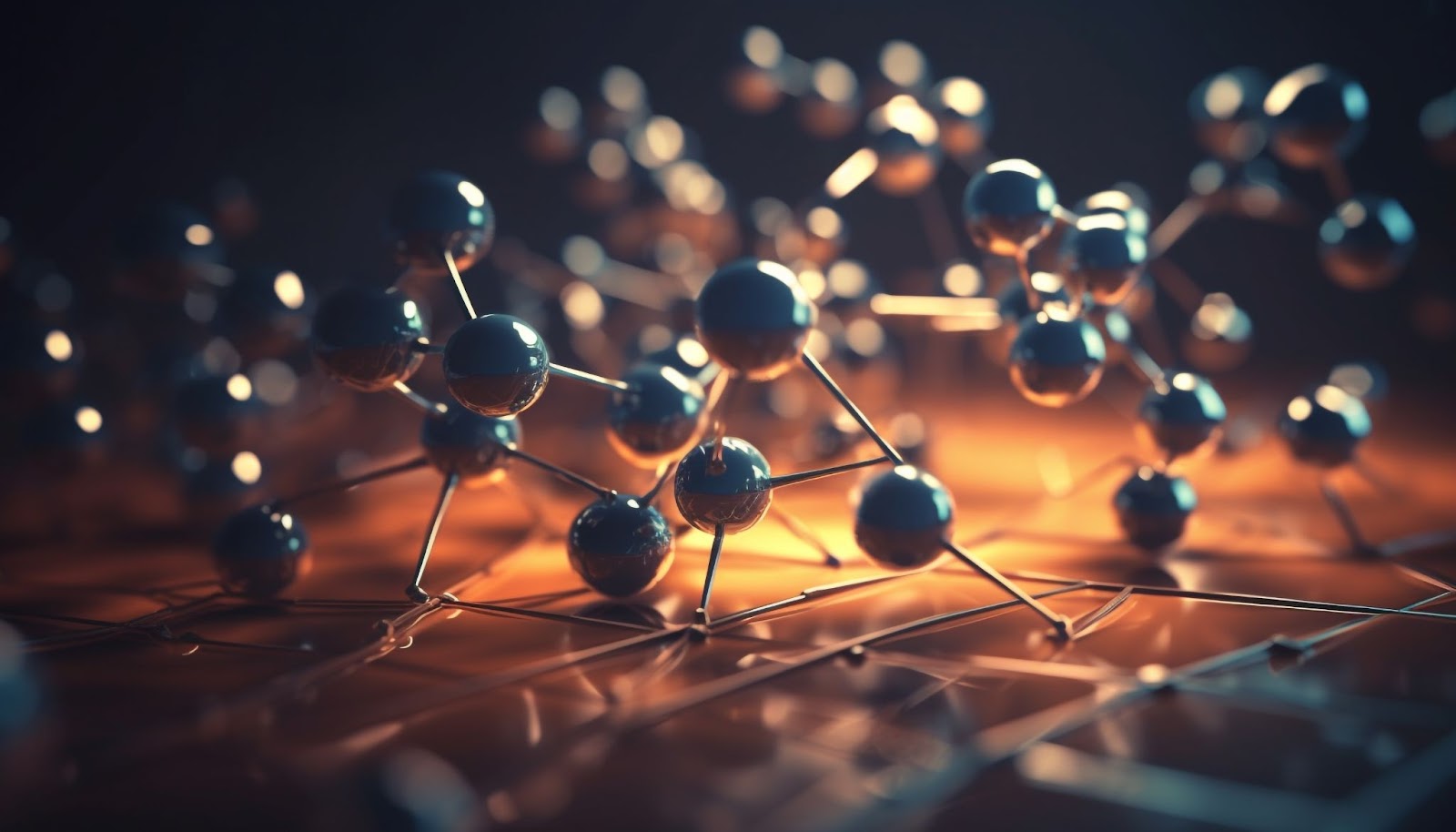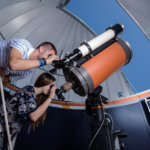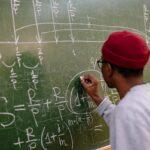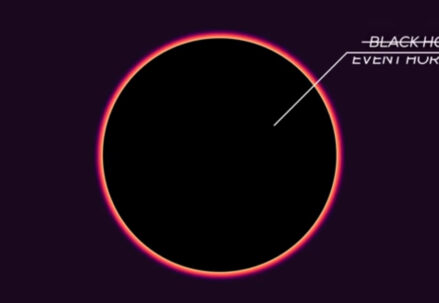On December 27th, 1956, a groundbreaking experiment conducted by the Chinese-American physicist Chien Wu sent shockwaves through the world of physics. Wu’s pioneering work unequivocally demonstrated a violation of parity within the realm of weak interactions. While this revelation may not appear startling in today’s scientific landscape, it represented a profound resolution to a perplexing enigma that had long confounded physicists.
In the forthcoming discussion, I will endeavor to elucidate the intricate notion of parity in the most straightforward manner conceivable. We will delve into the experiment that unveiled the anomaly in this fundamental concept, and ultimately, we will celebrate the ingenuity of the remarkable woman who unraveled this enduring mystery.
Delving into the Dynamics of Symmetries and Conservation Laws in Physics
Understanding any advanced concept necessitates a strong foundation in the basics. It holds true when we explore parity in physics, a subject deeply rooted in symmetries and conservation laws.
Let’s unravel these intriguing concepts of physics step by step.
Unfolding the Concept of Symmetry
Symmetry finds its origin in the mathematical definition, indicating the exact equivalence of a shape when subjected to movements, rotations, or flips. The simplistic example of a square perfectly illustrates this concept. Rotate a square by 90 degrees, four times in any direction, and the square retains its shape. The essence of symmetry in physics echoes this fundamental idea.
Symmetry in Physical Phenomena
Using a real-life example, we can shed light on this topic. Picture yourself standing in the middle of a vast, flat ground, holding a ball. For the sake of this discussion, let us consider this point as the origin of the cartesian coordinate system.
Now, the task at hand is simple. You have to release the ball and measure the time it takes to touch the ground. The time taken by the ball to reach the ground indeed relies on the height from which you drop it. However, three critical factors have no bearing on this time frame.
- Spatial factor: The first factor is the position from where you drop the ball. Regardless of whether you release the ball from the point you’re standing (the center of the ground) or from another location (like near a corner), the time taken by the ball to reach the ground remains consistent. This is a demonstration of translational symmetry.
In the following sections, we will continue to explore the profound implications of symmetries and conservation laws in physics, and how they interplay with advanced concepts like the Wu Experiment.
The Interplay of Time, Space, and Direction: Symmetry in Action
Diving deeper into the symmetries concept, we can identify three core elements that play pivotal roles in determining the outcome of physical experiments: location, time, and orientation.
- Temporal Symmetry: The moment you choose to drop the ball doesn’t influence the time it takes for it to hit the ground. Conduct the experiment today, or a year from now, the result remains unaffected. This immutable, time-independent feature suggests temporal symmetry;
- Rotational Symmetry: The direction in which you are situated has no bearing on the result. Regardless of whether you face north, east, south, or west, the time taken by the ball to touch the ground remains constant—a clear manifestation of rotational symmetry.
Conservation Laws: The Invisible Guiding Hand
Understanding symmetries paves the way to understanding the profound nature of conservation laws in physics. A conservation law asserts that certain measurable properties of a secluded physical system remain constant throughout its evolution. This interrelationship between symmetries and conservation laws originates from a brilliant insight by Emmy Noether, a groundbreaking mathematician and physicist.
Recognizing the relevance and real-world impact of the conservation laws associated with our aforementioned symmetries:
- Translational Symmetry corresponds to the Conservation of Linear Momentum;
- Temporal Symmetry relates to the Conservation of Energy;
- Rotational Symmetry associates with the Conservation of Angular Momentum.
For the scope of our discussion, understanding the mathematical derivations behind these associations isn’t necessary. Instead, knowing that symmetries engender conservation laws is paramount in grasping how experiments like the Wu Experiment upend our comprehension of the physical world. This knowledge becomes an invaluable tool in untangling the complex world of physical phenomena.
Navigating the Nuances of Parity
The layers of complexity in understanding physical phenomena deepen when considering the element of forward and backward motion. This concept, synonymous with the principle of parity, provides another dimension to our understanding of symmetry in physics.
- Parity in Action: Visualizing what parity entails, imagine conducting an experiment reflected in a mirror. If the mirrored image accurately replicates the experiment, the premise of parity holds. Mathematically, this occurs when changing x to -x, y to -y, and z to -z does not alter the end result of the equations.
When it comes to quantum mechanics, the principle of parity gains another layer of sophistication.
- The Wavefunction in Quantum Mechanics: Quantum particles are defined by their wavefunctions, typically denoted as Ψ(x). The parity operation, which involves negating the spatial coordinates, affects this wavefunction differently based on the particle’s inherent characteristics;
- Positive and Negative Parity: A particle’s wavefunction remaining unaltered upon the application of a parity operation indicates positive parity, represented by P = +1. If the wavefunction experiences a phase reversal to -Ψ(x), the particle is said to possess negative parity, denoted by P = -1.
The Wu Experiment, a groundbreaking study in the world of physics, challenged the conservation of parity in certain types of interactions. This unexpected finding revolutionized our understanding of symmetry in the universe and changed the course of modern physics. Understanding the principle of parity is crucial for appreciating the significance of the Wu Experiment and its implications on the standard model in physics.
The Parity Conundrum: Unraveling the τ-θ Puzzle
A significant turn in the road to comprehending parity came with the perplexing τ-θ puzzle. Both τ and θ particles shared identical traits in mass, charge, and lifetime, but their decay patterns varied significantly.
- β Decay: The θ particle decayed into two pions, while the τ particle disintegrated into three pions. Pions are fundamental particles composed of a quark-antiquark pair.
To infer the parity of a particle, physicists examine the decay particles and calculate their parity multiplication.
- Parity of θ Particle: As the θ particle decays into two pions with an established parity of -1, the resulting parity of the θ particle computes to (+1) (since (-1) x (-1) equals (+1));
- Parity of τ Particle: On the other hand, the τ particle, which decays into three pions, sums up to a resulting parity of (-1) (since (-1) x (-1) x (-1) equals (-1)).
The scientific community held unwavering faith in the conservation of parity for every particle interaction, considering it a fundamental law of nature. The conservation principle asserts that the parity before and after interaction remains invariant.
Under this assumption, τ and θ, despite sharing attributes of mass, lifetime, and charge, would qualify as distinct particles due to their different decay patterns. However, if parity is violated, τ and θ could potentially be identical particles. This intriguing puzzle laid the groundwork for the Wu Experiment and the subsequent upheaval in our understanding of parity conservation.
An Enigma Unveiled: The Beginnings of the Wu Experiment
For the physics world in 1956, the τ-θ puzzle was a tantalizing enigma, a conundrum that was the focus of scientists globally. The discussions and debates around this puzzle were at the heart of numerous conferences and meetings, including the famed Rochester Conferences. These gatherings aimed to bridge the gap between theorists and experimental physicists, fostering collaborations to decipher the pervasive mysteries of the time.

One such event saw Chen Ning Yang take center stage to illustrate this paradox, with various theories and potential solutions flying around the hall. A highlight among these was the proposition that τ and θ were merely different decay routes of an unknown particle – a proposed explanation that would shatter the bedrock assumption of a unique parity associated with each particle. This idea sparked renewed interest and further propelled the investigations into this puzzle.
Among those drawn to this enigma were Chen Ning Yang and his colleague, Tsung-Dao Lee, who were engrossed in conversations around the theoretical aspects of particle physics. Their interest lay in a particular facet of the τ-θ puzzle – the weak force. This force, one of the four fundamental forces of nature, alongside gravity, strong, and electromagnetic force, governed the decay process of τ and θ.
Their discussions led them to postulate a radical idea that challenged existing fundamentals – could parity conservation be violated in weak decays? If a particle could potentially have two decay modes with differing parities, was it possible that parity isn’t conserved in weak interactions?
Was this theoretical proposition backed by any experimental confirmation? This was the question they had to answer. Their journey to unravel the mystery of parity conservation in weak interactions was about to change the face of modern physics – leading to the groundbreaking Wu Experiment.
Chien-Shiung Wu: The Unassuming Revolutionist
While Lee and Yang were experts in theoretical physics, they ventured into experimental territory by collaborating with Chien-Shiung Wu, a respected colleague at Columbia University. Wu was a renowned experimental physicist, particularly known for her expertise in beta decay phenomena. Her reputation for precision and accuracy in experimental findings was legendary within the scientific community. “If it’s from Wu, it must be true,” was a common adage among physicists.
When consulted by Lee and Yang, Wu handed over a compilation, a meticulous record of the findings of every beta decay experiment conducted in the past four decades. As they sifted through this compilation, a startling revelation emerged – not a single experiment had empirically confirmed parity conservation in the context of weak decays.
Spurred by a spirit of inquiry and the potential implications, Wu decided to test this unproven assumption. The anticipated result was parity conservation, which would have aligned with prevalent beliefs. However, if their hypothesis of parity violation held, it would fundamentally reshape the scientific understanding of the laws governing the universe.
Quantum Spin and the Blueprint of the Wu Experiment
To truly appreciate the design and the genius behind Wu’s experiment, a quick orientation with quantum mechanical spin is necessary. For starters, envision a particle as a miniaturized spinning sphere. While this comparison is not entirely accurate, it provides a visual metaphor for what’s to come.
Particles exhibit a peculiar characteristic, spin, which gives rise to two possible orientations – along or against the direction of motion. If the direction of motion is pointed by the thumb, the particle’s rotation direction can be indicated by the curling fingers. Visualize this process with both hands, and depending on the hand that correctly encapsulates the rotation, the particle is designated as right- or left-handed.
Let’s imagine the scenario with the thumb pointing upwards, indicating the direction of motion. If the particle spins clockwise, it aligns with the left hand’s curling fingers, while for an anti-clockwise spin, the right hand’s curling fingers mimic the spin. Toggling between both hands illuminates this concept, thereby paving the way for the understanding of Wu’s experiment.
For her landmark experiment, Wu needed to ensure the following three conditions:
- Select a nucleus that undergoes beta decay, a process governed by the weak force;
- Opt for a nucleus that exhibits an innate quantum mechanical spin;
- Align all the selected nuclei to spin in the same direction, which, while critical, was a challenging feat.
Why were these conditions crucial? To test for parity violation, a direction needs to be defined for analyzing the decay particles emerging from the nucleus. Questions like whether the decay products emerge parallel to the nuclei’s spin, opposite to it, or at a right angle come into play.
If parity were conserved, flipping all directions to their opposite should not affect the observation. Hence, the alignment of all nuclear spins was essential to accurately test the parity conservation hypothesis.
The idea of the experiment is to ‘count’ the number of left-handed and right-handed neutrinos. If their frequency is almost the same, then nature does not differentiate between the system’s ‘handedness’ in weak decay. So what was the result?
To Wu’s surprise, the left-handed neutrinos had more flux than the right-handed neutrinos. This was the first compelling evidence that parity is violated in weak decay. The orientation of the system does matter. Not everyone believed the initial results. In a letter to Victor Weisskopf, Wolfgang Pauli wrote, “I can’t believe that the Lord is a weak left-hander.” But quickly, the experimental results were confirmed by groups around the world.
She was excluded from the well deserved Nobel, as were many other female scientists during that time. Wu was well aware of gender-based injustice, and at an MIT symposium in October of 1964, she stated, “I wonder whether the tiny atoms and nuclei, or the mathematical symbols, or the DNA molecules have any preference for either masculine or feminine treatment.”
Although her experiments did not win her a Nobel in Physics, they definitely gave her the title “The First Lady of Physics.” Wu was decorated with honors in every other way, including the National Medal of Science and the Wolf Prize in Physics. She even had an asteroid named after her in 1990.
Conclusion
In conclusion, the date of December 27, 1956, marked a pivotal moment in the history of physics, courtesy of Chien Wu’s groundbreaking experiment. Through her pioneering work, she shattered the established notions of parity within weak interactions, providing a long-sought solution to an enduring mystery that had perplexed the scientific community. Wu’s brilliance and dedication continue to inspire and remind us of the profound impact that individual curiosity and innovation can have on the course of scientific discovery. Her legacy serves as a testament to the power of human intellect and the relentless pursuit of understanding the fundamental laws of our universe.





